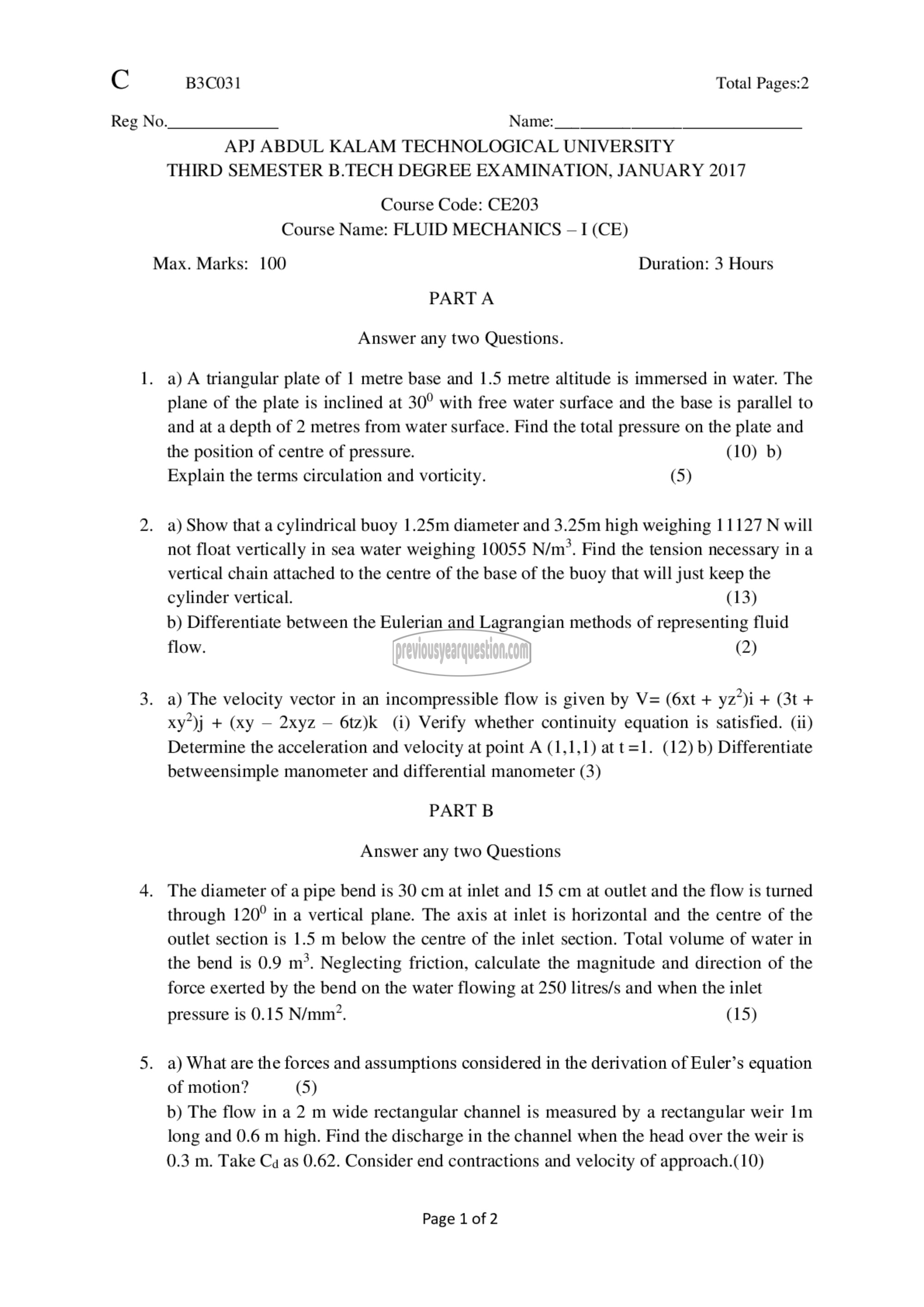APJ ABDUL KALAM TECHNOLOGICAL UNIVERSITY Previous Years Question Paper & Answer
Semester : SEMESTER 3
Subject : Fluid Mechanics– I
Year : 2017
Term : JANUARY
Branch : CIVIL ENGINEERING
Scheme : 2015 Full Time
Course Code : CE 203
Page:1
(இ 830031 Total Pages:2
Reg No. ۱81076: _
APJ ABDUL KALAM TECHNOLOGICAL UNIVERSITY
THIRD SEMESTER B.TECH DEGREE EXAMINATION, JANUARY 2017
Course Code: CE203
Course Name: FLUID MECHANICS - I (CE)
Max. Marks: 100 Duration: 3 Hours
PARTA
Answer any two Questions.
1. a) A triangular plate of 1 metre base and 1.5 metre altitude is immersed in water. The
plane of the plate is inclined at 30° with free water surface and the base is parallel to
and at a depth of 2 metres from water surface. Find the total pressure on the plate and
the position of centre of pressure. (10) b)
Explain the terms circulation and vorticity. (5)
2. a) Show that a cylindrical buoy 1.25m diameter and 3.25m high weighing 11127 N will
not float vertically in sea water weighing 10055 N/m’. Find the tension necessary in a
vertical chain attached to the centre of the base of the buoy that will just keep the
cylinder vertical. (13)
b) Differentiate between the Eulerian and Lagrangian methods of representing fluid
flow. (2)
3. a) The velocity vector in an incompressible flow is given സട (6xt + yz”)i + (3t +
ர + (xy — 2xyz - 6tz)k (i) Verify whether continuity equation is satisfied. (ii)
Determine the acceleration and velocity at point A (1,1,1) at ಎ1. (12) 0) Differentiate
betweensimple manometer and differential manometer (3)
PART ந
Answer any two Questions
4. The diameter of a pipe bend is 30 cm at inlet and 15 cm at outlet and the flow is turned
through 120° in a vertical plane. The axis at inlet is horizontal and the centre of the
outlet section is 1.5 m below the centre of the inlet section. Total volume of water in
the bend is 0.9 713. Neglecting friction, calculate the magnitude and direction of the
force exerted by the bend on the water flowing at 250 litres/s and when the inlet
pressure is 0.15 N/mm. (15)
5. a) What are the forces and assumptions considered in the derivation of Euler’s equation
of motion? (5)
b) The flow in a 2 m wide rectangular channel is measured by a rectangular weir 1൩
long and 0.6 m high. Find the discharge in the channel when the head over the weir is
0.3 m. Take Ca as 0.62. Consider end contractions and velocity of approach.(10)
Page 1 of 2
